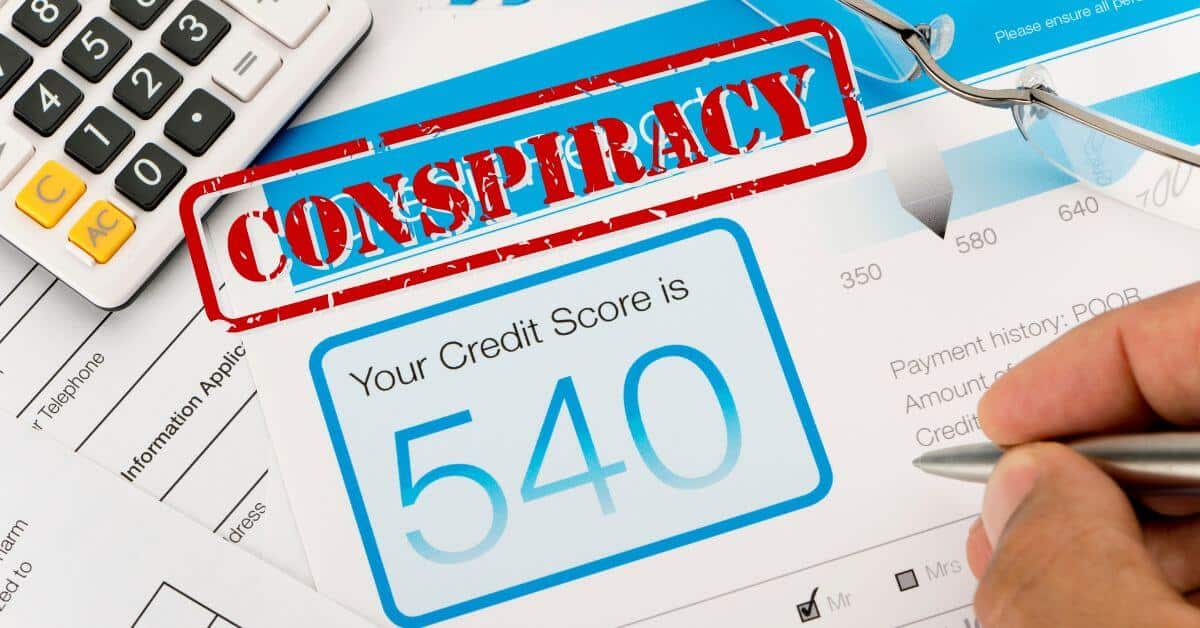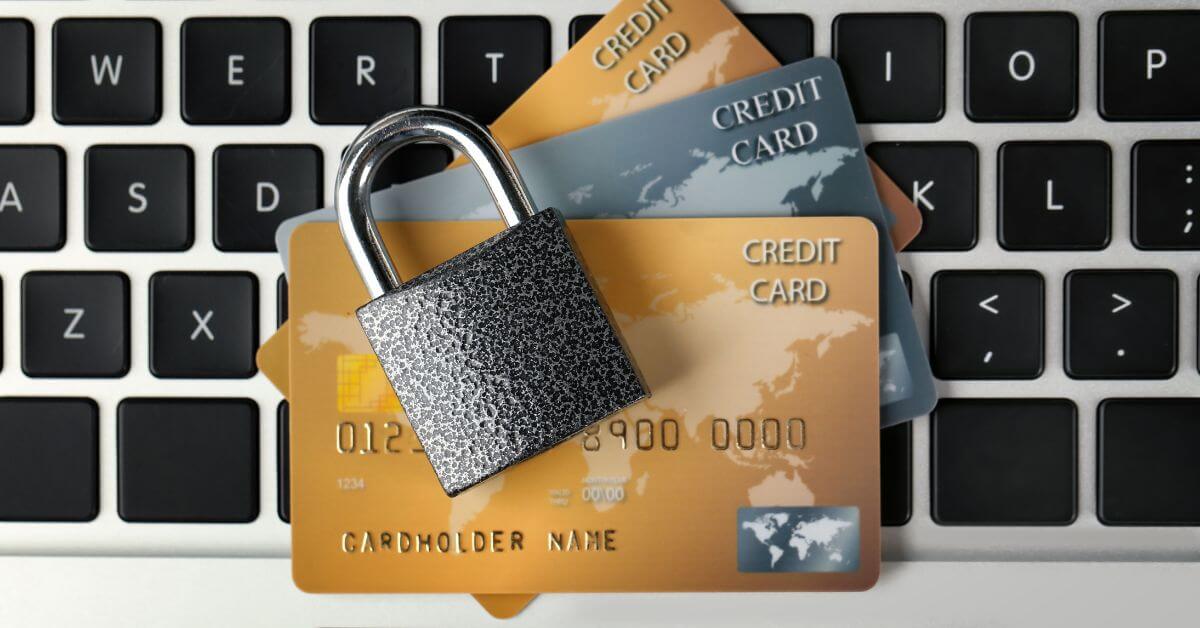We’re passionate about credit repair, and we’re equally passionate about helping consumers understand the credit score conspiracy. In our work with clients, questions often arise. Why is it so difficult to dispute errors on a credit report? Why is it so difficult and complicated to repair credit?
Whenever you see an unpleasant situation that seems to persist despite efforts to fix it, it’s important to ask one question: who stands to gain from this state of affairs?
In this case, there are two entities benefitting from poor credit scores and the devastating effects they create on consumers. The banks and the credit bureaus work together to create a system in which consumers are categorized and herded like virtual cattle into segments that create the most profit for them. It’s truly a credit score conspiracy designed to keep you stuck in an unfortunate situation. Let’s break down what’s going on.
First, let’s talk about how banks create profit in the first place.
How Do Banks Make Money?
They make some of their money through fees. Most banks have fees of various kinds associated with different accounts, which help to offset the operational costs of offering those accounts. Some of these fees have evolved into things like “overdraft lines of credit,” which amount to insanely expensive loans from the bank, and have turned into key profit generators for many banks.
But where does the rest of the money come from? The answer is loans. For every dollar that is sitting in checking accounts at any given bank, they probably have somewhere around $10 (or more) in outstanding loans.
It is through those loans that the bank makes their money.
It goes something like this:
You deposit a dollar, and get 1% interest on that dollar. That means you’ll get $.01 per year for that dollar.
But the bank loans out that dollar, plus 9 more pretend dollars, and makes anywhere from 5%-29% interest on the $10 loan.
So while you’re making $0.01 per year on your dollar, the bank might be making over $2.00 per year on the money they loaned out (at a 20% interest rate.)
As you can see, if the bank is only paying you $0.01 per year for that dollar, and charging fees for using tellers and checks, you’re not getting much compared to what they are getting out of that same dollar.
In this (admittedly over-simplified) example, the bank makes somewhere around 200 times more than you do for every dollar you deposit.
And they make that money by issuing loans to consumers.
The higher the interest rate is on the loan, the more money the bank makes.
So while high interest rates on loans are “BAD” for you, the consumer, they mean more money for the banks. You’re likely starting to see an incentive here.
Banks often offer attractive periods of “lenient lending,” followed by periods of “credit fallout”, where consumers who received loans can’t pay them.
And guess what those periods of lenient lending create? More people with bad credit.
And once you’re in the “bad credit pool,” the banks want to keep you there, paying exorbitant interest rates.
Aren’t Consumers with Bad Credit a Risk to the Banks?
Of course, there is always the risk, especially with regards to unsecured debt, that a consumer won’t follow through with their obligation to pay back a loan.
The bank offsets those costs by doing three things:
1. Charging more for loans to consumers with a history of defaulting. More fees, more interest, more money.
2. Selling loans in default to bill collectors.
3. Getting a tax write off for losses on loans that go south.
To better understand how this works, let’s look at an example.
For the sake of this example, let’s say that a certain category of consumer (one with bad credit) gets higher interest rates because of past defaults. Let’s say, for the sake of illustration, that 30% of consumers in this category eventually default on a loan.
So out of 10 consumers with one $10,000 loan each (for a total of $100,000 in loans), 3 consumers will default on $30,000 worth of loans.
Let’s take those 10 consumers and look at what happens:
Each consumer pays roughly $100 per month in interest for the loans (at 20% interest). In addition to this, about $100 each month is going to principal.
Since 7 of the consumers will pay off the loan (in about 8 years), the bank will make around $75,000 off those 7 loans.
But what about the 3 consumers who don’t pay?
If they pay on their loans for an average of 2 years, the bank will make roughly $2,300 per consumer in that 2 years. Another $2,400 per consumer will have been paid towards the principal.
So, the bank has an outstanding balance of $7,600 per consumer in default.
They then write that balance off, which reduces their taxes.
Next, they sell that $7,600 to a collection agency who pays $1,140 for the bad debt.
At this point, the bank has received…
$2,400 in principal payments
$2,300 in interest payments
$1,140 from the sell of the loan
(Not to mention the tax savings from the write off.)
That’s a total of $5,840 received on the 3 $10,000 loans, making it a total loss of $4,160 x 3, = $12,480.
Do you remember how much the bank made off the consumers who didn’t default?
$75,000.
Subtract the $12,480 losses from that number and their profit is somewhere around $62,000 on the “bad credit” loans.
These numbers are based on 10 loans at 20% interest with $200 per month payments, on which 3 of the 10 consumers eventually default.
What Good Credit Costs Banks
Let’s take the above example a step further. Let’s say that the 10 consumers that the bank loaned the money to were in a different category (those with good credit) that according to statistics, rarely defaults on loans.
So the 10 consumers would get their loans for $10,000 at perhaps 10% interest instead of 20%. With the same loan amount, and the same $200 per month payment, the 10 “good credit” consumers would only pay about $2,848 over the life of the loan.
The math here is simple:
$2,848 x 10 consumers = $28,480 profit on those 10 consumers.
Remember how much profit was in our “bad credit” example?
$62,000 was the rough estimate.
$62,000 – $28,480 = $33,520
And there is the answer:
Loaning $10,000 to 10 consumers with good credit versus 10 with bad credit could COST the bank $33,520.
Where The Money Is
We know that there are more numbers involved in the bank’s operations, but we have given a simplified example here to illustrate this point:
The banks make more money on higher risk loans with higher interest rates.
And even at a 40% or 50% default rate, the numbers remain very attractive for the bank.
The real money is in high interest loans, or “subprime” loans.
The trick for the bank is getting consumers that are “risky” enough (or desperate enough) to pay higher interest rates, but reliable enough to keep the default rate within the limits needed to maintain profits.
And that’s where the credit bureaus come in.
The Data Business
Credit bureaus collect and sell data.
Banks are the credit bureaus’ main customers. The banks go to the credit bureaus to get the data they need for marketing to consumers. The most profitable consumer for the banks is one with bad enough credit to justify a higher rate, but still fairly good chances of keeping good on their promise to pay the loan. In other words, the ideal is to find people with “bad credit,” not “horrible credit.”
So, “bad credit” data is in high demand. As a business, the credit bureaus naturally want to sell their customers the kind of data they want. And since bad credit data is in high demand, the more bad credit data they have, the better off they are.
In very subtle but calculated ways, the credit bureaus do things that shape their data on a large scale to give their customers (the banks) what they want. Anyone who has ever had a legitimate error on their credit report can tell you that it can be a huge hassle to get things corrected.
You would think just writing the bureau would be enough. But it isn’t. Letters get ignored, incorrect items get “verified,” and consumers get rebuffed. It’s not by accident, either. The whole system is designed that way.
With lots of “bad credit” customers, the banks are happy, the bureaus are happy, and the consumer pays double and sometimes triple for products and services. This is where the “credit score conspiracy” really comes into play. Negative information is just too profitable.
We’re Here for You
InCreditable Advisors can help. This is why we’re so excited about our work with consumers. Expert advice and guidance can mean the difference between staying stuck as a pawn in the credit score conspiracy, or getting out and getting what you deserve.
To learn more about credit improvement please visit us at https://creditexperts.io/ or give us a call for a strategy session at 317.202.1297






